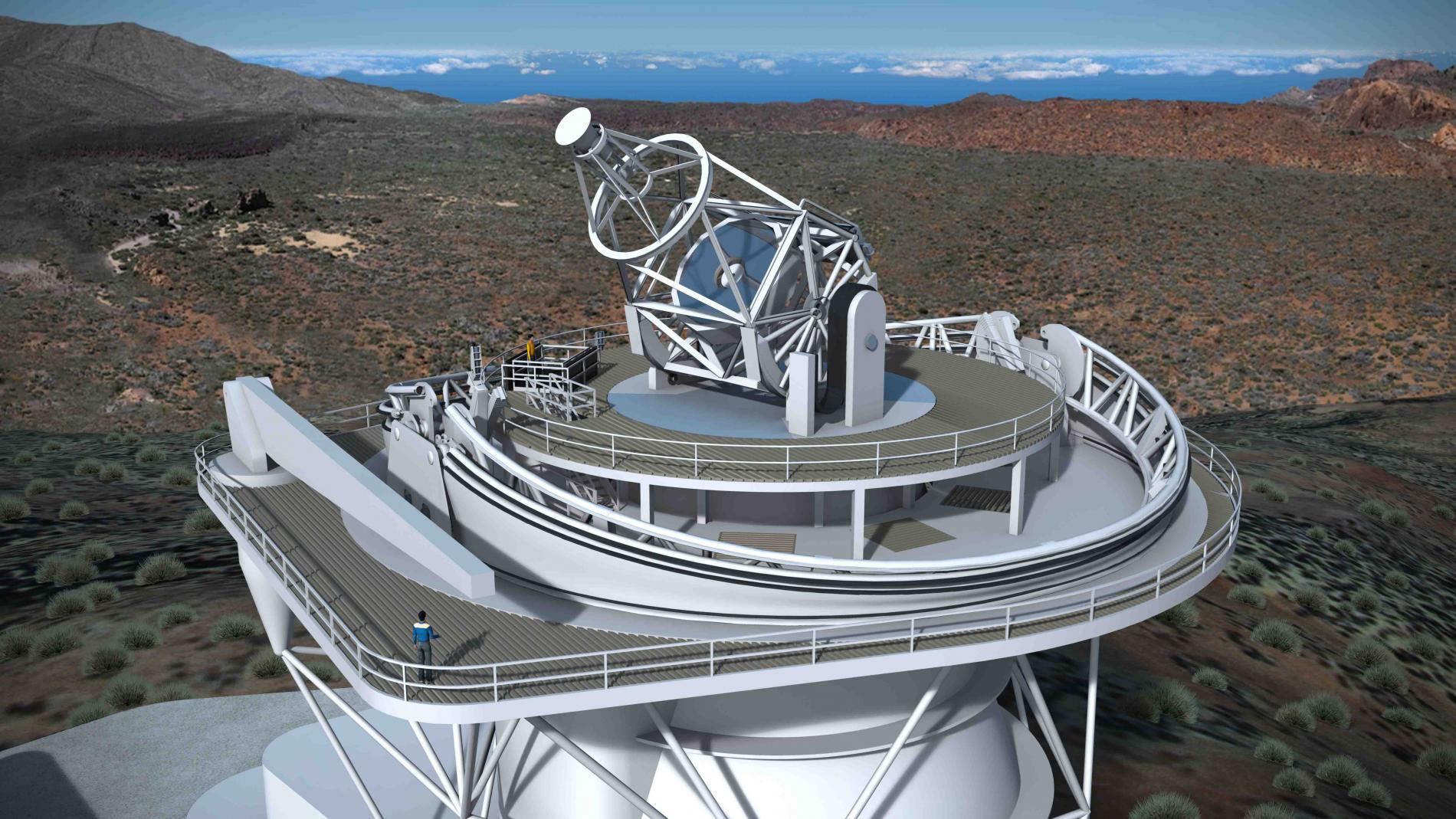The European Solar Telescope will boost research on the Sun in Europe
The new infrastructure, which will be presented at an event at the CSIC, will have a mirror with a diameter of 4.2 meters and a height of 44 metres, and will be the largest solar telescope in Europe. Construction is scheduled to begin in 2024 at the Roque de los Muchachos Observatory, on the island of La Palma, and it could be operational in 2029
The European Solar Telescope (EST) will boost research on the Sun in Europe. It will have a primary mirror with a diameter of 4.2 meters and a height of 44 metres, it will be the largest solar telescope in Europe and its cutting-edge technology will provide astronomers with a unique tool to understand the Sun and how it determines the conditions of space near Earth. This new European infrastructure will be presented in Spain on Tuesday, May 3, at 12:00, at the Residencia de Estudiantes in Madrid, in an act that can be followed in streaming.
Spain leads the international EST consortium through the Instituto de Astrofísica de Canarias (IAC), as coordinator, and the Institute of Astrophysics of Ansalusia (IAA-CSIC). The European Solar Telescope, which is scheduled to begin construction in 2024 at the Roque de los Muchachos Observatory, on the island of La Palma, could be operational in 2029.
The president of the CSIC, Rosa Menéndez, will welcome the event, which will include the participation of Raquel Yotti, General Secretary for Research, and Inmaculada Figueroa, Deputy Director General for the Internationalization of Science and Innovation. The researchers Manuel Collados, from the IAC, and Luis Bellot, from the IAA-CSIC, will be in charge of explaining in detail the EST project and the Spanish contribution to this project. During the act "Reaching for the sun" will be screened, a documentary presented by its director Emilio J. García (IAA-CSIC) and which reviews more than 400 years of history on the observation of the Sun in Europe since Galileo Galilei and which places the European Solar Telescope in the framework of current solar physics research.

Flagship of European Solar Physics
“For scientists, one of the greatest challenges facing solar physics is to understand the processes that generate and concentrate magnetic fields in the lower part of the photosphere, the region from which the visible light of the Sun that reaches to Earth," explains Bellot. Although there are solar telescopes with advanced technologies, they still do not allow us to observe the fundamental processes that give rise to these magnetic phenomena. Understanding them is essential because the Sun, as a star, provides a unique model to understand how the rest of the stars in the universe work and serves as a reference in terms of physical processes, chemical composition, structure and evolution models.
The aim of the EST project is to investigate the structure, dynamics and energy of the lower solar atmosphere, where magnetic fields continually interact with plasma and magnetic energy is occasionally released in the form of powerful explosions. This requires observing fundamental processes on a small scale, that is, less than thirty kilometers on the solar surface. To do this, the telescope will be equipped with a 4.2-meter mirror, an advanced adaptive optics system and specialized instruments for high-sensitivity observations throughout the visible and near-infrared spectrum.
Considered a flagship of European solar physics, the project was included in the roadmap of the European Strategy Forum for Research Infrastructures (ESFRI) in 2016 and is promoted by the European Association of Solar Telescopes (EAST), which is made up of 26 institutions from 18 European countries and represents a community of more than 600 solar physicists.
Instituto de Astrofísica de Andalucía (IAA-CSIC)
Unidad de Divulgación y Comunicación
Silbia López de Lacalle - sll[arroba]iaa.es - 958230676
https://www.iaa.csic.es
https://divulgacion.iaa.csic.es

